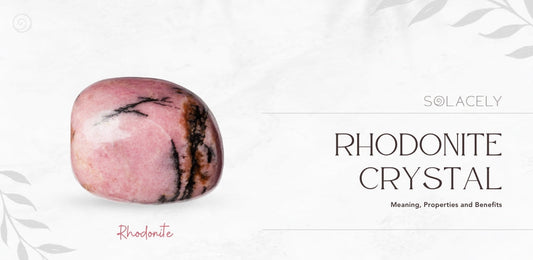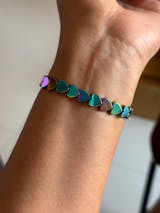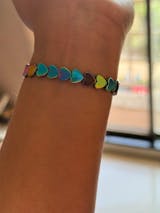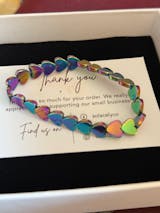Exploring Rune Symbols
Rune symbols hold a special place in the world of spirituality. They offer insight and guidance through their ancient and enigmatic symbols, which are deeply rooted in history and provide a unique lens through which we can connect with the divine and the natural world.
Origins of Viking Runes
The Viking Runes are not merely remnants of an ancient writing system; they are emblems infused with profound symbolic meanings and magical powers, echoing the deep connection that the Vikings had with their surroundings and their mythology. These characters were more than mere letters; they were seen as conduits to the divine, offering wisdom that the gods themselves might grant. Each rune was believed to harbor its unique energy and connection to specific deities or cosmic forces, making them integral to the spiritual practices of the Norse people.
Symbolic Meanings and Powers
Each symbol in the runic alphabet carries myriad meanings, representing various facets of existence, the forces of nature, and spiritual concepts. Far from arbitrary, these symbols encapsulate the essence of the elements they represent, offering insights into life's myriad dimensions. In divination, these symbols serve as guides, providing solace and answers to those seeking wisdom from the runes. The original Elder Futhark rune system, consisting of 24 symbols, each with its name and significance, is a testament to the rich tapestry of meanings the runes embody.
Exploring their symbolic meanings can be a transformative journey for those inclined to delve deeper into the mystique of runes. Whether seeking protection, love, strength, or success, the runes offer a spiritual toolkit for harnessing divine energy in various aspects of life. As talismans or in divination, runes can be powerful allies in spiritual practice, facilitating personal growth, enhancing intuition, and guiding one toward peace and prosperity. Those interested in incorporating these ancient symbols into their lives can find myriad ways, from invoking their power for healing and luck to promoting transformation, abundance, and balance.
Understanding Runic Alphabet
The runic alphabet is a fascinating aspect of ancient writing systems, and its symbols have been revered for their mystical properties and spiritual significance. This section will delve into the Elder Futhark runes, the oldest form of runic alphabets, and the subsequent Younger Futhark evolution.
Elder Futhark Runes
The Elder Futhark runes are 24 symbols widely used for writing across Scandinavia and other parts of Northern Europe from approximately 200-800 AD. The name "Futhark" originates from the first six letters of the runic alphabet: "Fehu," "Uruz," "Thurisaz," "Ansuz," "Raidho," and "Kennaz."
Each rune symbolizes different aspects of existence and carries specific meanings that contribute to the rune symbols for spirituality. They are organized into three groups of eight, known as aettir or families. The first runes of the aettir are Fehu, Hagalaz, and Tiwaz, also referred to as the Mother Runes, signifying their foundational importance in the runic hierarchy.
| Aett | Mother Rune | Additional Runes in Aett |
|---|---|---|
| First | Fehu | Uruz, Thurisaz, Ansuz, Raidho, Kennaz, Gebo, Wunjo |
| Second | Hagalaz | Nauthiz, Isa, Jera, Eihwaz, Perthro, Algiz, Sowilo |
| Third | Tiwaz | Berkano, Ehwaz, Mannaz, Laguz, Ingwaz, Dagaz, Othala |
The Elder Futhark is often associated with divine connections and was used not only for inscription but also for divination and magical purposes. The runes are believed to have been sacred gifts from the gods, granting a link between the earthly and the divine.
Younger Futhark Evolution
The Younger Futhark, which emerged around 800 AD, evolved from the Elder Futhark. It consists of a streamlined set of only 16 runes and was used until approximately 1100 AD. This simplified runic system reflects the changes in language and phonetics of the time.
Reducing the number of runes in the Younger Futhark did not diminish the significance of runic writing; instead, it adapted to accommodate the evolving linguistic landscape. Despite having fewer symbols, the Younger Futhark maintained the depth of meaning and continued to be used for various purposes, including writing, magic, and spirituality.
Here is an overview of the Younger Futhark runes:
| Younger Futhark Rune | Corresponding Elder Futhark Runes |
|---|---|
| Fehu | Fehu |
| Uruz | Uruz, Thurisaz |
| Ansuz | Ansuz, Raidho |
| Kaun | Kennaz, Gebo, Wunjo |
| Hagalaz | Hagalaz, Nauthiz, Isa |
| Jera | Jera, Eihwaz |
| Ihwaz | Perthro, Algiz, Sowilo |
| Tiwaz | Tiwaz, Berkano |
| Bjarkan | Ehwaz, Mannaz |
| Madr | Laguz, Ingwaz, Dagaz |
| Logr | Othala |
The transformation into the Younger Futhark runes demonstrates the adaptability and enduring nature of runic symbols, which continue to captivate individuals seeking spiritual insight. Those interested in the practical uses of these ancient symbols can explore divination with rune symbols or consider runes as talismans for various intentions, such as rune symbols for protection, love rune symbols, and rune symbols for strength.
Significance of Each Rune
The mystical allure of rune symbols extends far beyond their historical use as an alphabet. Each symbol encompasses life, nature, and the spiritual realm. Understanding the depth of these symbols can offer guidance and insight for those exploring spirituality.
Divine Connections
The Vikings viewed runes as more than letters; they were a direct line to the divine. Each rune is believed to house a unique energy and serves as a conduit to specific gods or cosmic forces. This sacred correlation is why runes are often associated with divine wisdom and power, making them integral to various spiritual practices.
In Norse mythology, Odin, the Allfather, is credited with the knowledge of runes and their magick. According to legend, Odin's enlightenment came after an intense ordeal in which he hung from Yggdrasil, the world tree, for nine days and nights. The revelation of the runes was his reward, a gift he then shared with humanity. This myth underscores the divine origins of runes and their connection to higher wisdom and magical practices.
Symbolism in Nature and Life
Runes encapsulate the essence of the natural world and the human experience. Each rune symbolizes various aspects of existence, from fertility and prosperity to strength and transformation. The 24 runes of the Elder Futhark, the oldest form of the runic alphabets, are organized into three families or 'aettir'. The first runes of these aettir are Fehu, Hagalaz, and Tiwaz, also revered as the Mother Runes, each representing a fundamental force or principle.
For those seeking to incorporate rune symbols for spirituality, understanding the tripartite nature of each rune is vital. The physical form of the rune, its phonetic sound, and symbolic meaning all contribute to its power. This multifaceted approach allows a deeper connection with the runes' energies through meditation, divination, or as part of a ritual.
Incorporating runes into one's life can be a transformative practice. Whether used for personal growth, intuition, or spiritual guidance, the significance of each rune remains deeply rooted in the interplay between the divine, the natural world, and the human spirit. For a deeper understanding of individual rune symbols and their meanings, refer to the meanings of rune symbols.
Practical Use of Runes
Runes have been used for centuries for their linguistic value, spiritual and practical purposes, and protective amulets. Individuals continue to harness their power for personal development, divination, and protection.
Divination and Rituals
Runes are often associated with divination—a means to gain insight into one's life and the possible future. Like tarot cards, runes can be cast or drawn to interpret underlying thoughts, feelings, and circumstances that influence one’s current situation. A standard method is rune casting, where stones or cards are scattered on a surface and read based on their positions and proximity to each other. For a deeper understanding of rune symbols and their meanings, explore our comprehensive guide on rune symbols meanings.
Runic divination is not solely about predicting the future; it’s a way to tap into one's subconscious and the universal energies that guide us. They can be used in rituals and meditation to focus intentions, making them a versatile tool for spiritual practices. For those interested in divination with rune symbols, we offer insights and methods on divination with rune symbols.
Talismans and Amulets
Apart from divination, runes are also crafted into talismans and amulets for protection, luck, and other purposes. Each rune has its unique energy and symbolism, which can be channeled into wearable objects to carry their influence with you. For example, runes symbolizing strength and protection, such as Thurisaz, can be fashioned into rune symbols for protection amulets. Similarly, Fehu, symbolizing wealth, might be used to create a talisman for prosperity.
Runes can be incorporated into jewelry, carved into wood or stone, or carried in a pocket. They can be consecrated through ritual, aligning with one's energy and the intended purpose. Whether seeking protection, love, or personal growth, runes offer many ways to support and enhance the spiritual journey.
The Mythology of Runes
The mythology surrounding runes is as intricate and profound as the symbols themselves. These ancient characters are not merely letters but are believed to hold magical properties and a deep connection to the divine.
Odin's Connection to Runes
In Norse mythology, Odin is intimately connected to the origin and mastery of rune symbols. It is said that Odin hung from Yggdrasil, the world tree, for nine days and nights, a self-imposed ordeal during which he gained the wisdom and insight of the runes. This powerful experience made him the master of runes, possessing the knowledge to wield them for various purposes, including divination and spell casting.
The tale of Odin's sacrifice reveals the runes as more than a simple alphabet; they are divine tools of transformation and understanding. The story emphasizes the spiritual significance of the runes and the dedication required to access their power. Thus, the runes are seen as a gift from the gods, particularly Odin, to those who seek esoteric knowledge and spiritual growth.
Historical and Modern Influence
Historically, the Elder Futhark, the oldest form of the runic alphabet, dates back to the 2nd to 8th centuries and consists of 24 characters. These symbols were used for communication and marked on artifacts and monuments, serving as sacred symbols endowed by the gods.
The Vikings attributed symbolic meanings and magical powers to each rune, reflecting their profound connection to their environment and mythology. Runes were an integral part of Viking culture and were used by sorcerers and magicians for purposes beyond mere writing—ranging from protection to victory in battle.
In modern times, the fascination with runes and their mystical properties continues. Many people incorporate rune symbols into their spiritual practices, seeking the ancient wisdom and powers they are believed to hold. Runes are used in divination, as talismans for protection, and as symbols to attract energies such as love, strength, success, and healing.
The enduring legacy of runes demonstrates their versatility and the universal search for guidance and understanding. Whether through historical study or personal exploration, the study of rune symbols offers a unique glimpse into the spirituality and worldview of the ancients and a path to personal insight for modern seekers.
Individuals today continue to uncover layers of meaning and power within these ancient symbols by engaging with runes, enriching their lives with the wisdom of the past and the divine energy that runes are believed to channel.
Incorporating Runes in Life
Integrating rune symbols into daily life can be a transformative journey for those seeking to enhance their personal growth and spiritual practices. As conduits of ancient wisdom, runes offer more than just inscriptions; they serve as tools for reflection, guidance, and self-discovery.
Personal Growth and Intuition
Runes can play a pivotal role in fostering personal development and sharpening intuition. Individuals can gain profound insight into their inner selves and paths by engaging with each symbol's energies. For instance, rune symbols for self-discovery can assist in uncovering latent talents or confronting personal truths. In contrast, rune symbols for intuition may help hone one's instincts and make more aligned decisions.
A practical method for incorporating runes into personal growth is through meditation. Selecting a rune that aligns with a current situation or challenge and meditating on its symbolism can bring clarity and perspective. Additionally, carrying a chosen rune as a talisman throughout the day can serve as a reminder of one's intentions and goals, subtly influencing decisions and actions positively.
Spiritual Practices and Guidance
Runes are steeped in spirituality and can significantly enrich one's spiritual practices. Whether used in divination to seek answers and guidance or included in rituals to amplify specific energies, the incorporation of runes can provide a unique connection to the divine. For example, rune symbols for guidance are often sought in times of uncertainty, while rune symbols for protection can be used to create amulets or talismans to safeguard one's energy.
Furthermore, runes can be aligned with various aspects of life, such as career goals, to gain insights into job opportunities, or to find new passions that resonate with one's energy. They can also be integral to self-care practices, such as creating rune-infused bath rituals or placing runes on altars to amplify self-love, healing, and inner balance.
Incorporating runes into daily life is an invitation to tap into a reservoir of ancient knowledge and energy. It opens avenues for self-reflection, provides spiritual guidance, and supports the journey toward self-fulfillment and enlightenment. As symbols with deep meaning, runes can be powerful allies in navigating the complexities of life and the pursuit of harmony and purpose.














